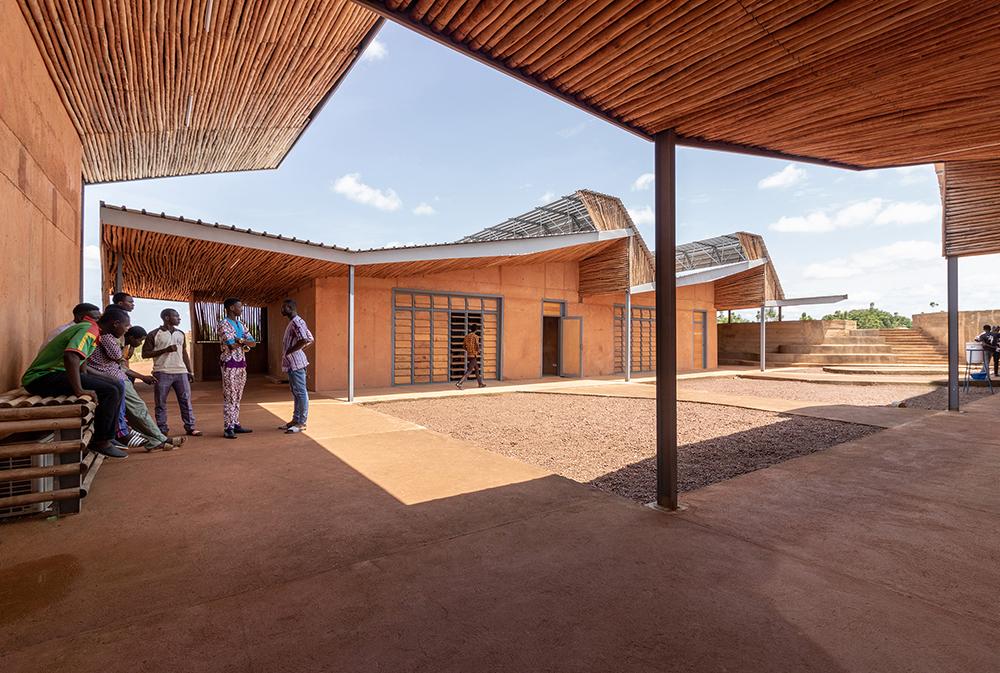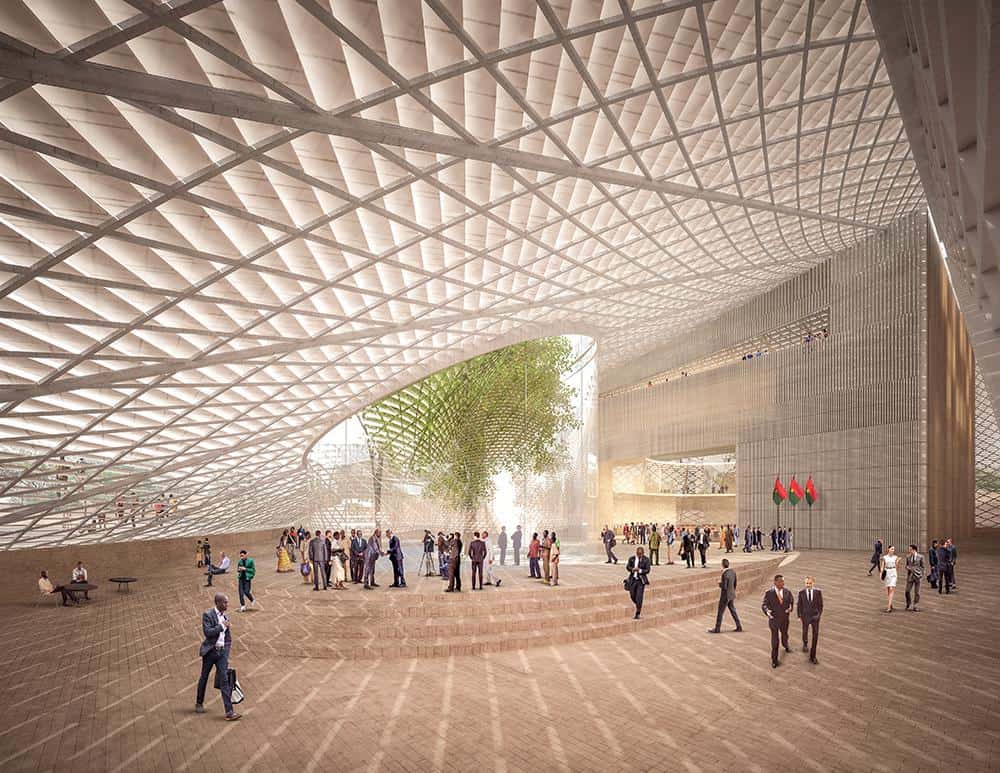Architect Diébédo Francis Kéré, a native of Burkina Faso known for his commitment to sustainability and social justice, was named Tuesday as the winner of the prestigious Pritzker Architecture Prize.
“Francis Kéré is pioneering architecture – sustainable to the earth and its inhabitants – in lands of extreme scarcity,” said Pritzker in its announcement. “He is equally architect and servant, improving upon the lives and experiences of countless citizens in a region of the world that is at times forgotten.”
The Pritzker committee said Kéré upholds the mission of the prize “through buildings that demonstrate beauty, modesty, boldness and invention, and by the integrity of his architecture and geste.”
Those buildings draw on Kéré’s childhood in Burkina Faso, and reflect the architect’s own mission to integrate sustainability principles into his works. Schools and other structures built in Mali, Togo, Kenya and Sudan have counterparts in pavilions and other creations across Europe, including Germany, where the Berlin-based architect makes his home.
“I am hoping to change the paradigm, push people to dream and undergo risk. It is not because you are rich that you should waste material. It is not because you are poor that you should not try to create quality,” says Kéré. “Everyone deserves quality, everyone deserves luxury, and everyone deserves comfort. We are interlinked and concerns in climate, democracy and scarcity are concerns for us all.”
They’re found all over the world, but many of the buildings that Kéré designs are in West Africa. They retain a sense of place, even when Kéré interprets for a completely different culture—as was the case when his temporary installation at the 2019 Coachella Music Festival was based on the hollowing baobab tree and its medicinal uses in his homeland.

“Kéré’s designs are laced with symbolism and his works outside of Africa are influenced by his upbringing and experiences in Gando,” said Pritzker, referring to Kéré’s home community. “The West African tradition of communing under a sacred tree to exchange ideas, narrate stories, celebrate and assemble, is recurrent throughout.”
The school at Gando is a cornerstone of Kéré’s work and is designed using simple bioclimatic principles to offset the extreme heat of the region. Indigenous clay is mixed with cement to build the structure so that cooler air stays inside. A wide, elevated roof allows for ventilation without the need for air conditioning. The improvements led to more local jobs as well as a nearly six-fold increase in student enrollment at the time it was built.
In Gando, the library’s concrete roof was poured around a grid of traditional clay pots. Once removed, the openings created by the pots allow heat to escape while circular shafts of natural light fall on the interior.
The Burkina Institute of Technology is designed to collect rainwater underground and was built with cooling clay walls. In Kenya, the Startup Lions Campus for IT and communication also has a passive cooling system that relies on the use of local quarry stone. This decreases the need for air conditioning while still maintaining temperatures for sensitive equipment.

The futuristic Benin National Assembly, above, is still under construction. It reflects the design of the palavar tree in a public park of Porto-Novo. As with much of Kéré’s work, aspects of social justice are woven into sustainable approaches to the government building so that the two are inseparable. “While parliament convenes on the inside, citizens may also assemble under the vast shade at the base of the building,” explains Pritzker.
Did you like it? 4.4/5 (25)








